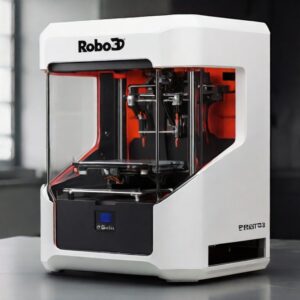Advantages of Robo 3D Printers

Ease of Use: Robo 3D printers are typically designed with the user in mind, featuring easy setup procedures, an intuitive interface, and a clear touchscreen display for simple navigation.
Build Volume: the printers, particularly models like the Robo R2, offer generous build volumes that accommodate larger prints or multiple smaller items.
Connectivity Options: with features like Wi-Fi connectivity, USB ports, and mobile applications, Robo 3D printers provide several ways to send print jobs and monitor print progress.
Material Flexibility: these printers can handle a variety of materials, not limited to just PLA and ABS, which is a significant advantage for users who want to experiment with different filaments.
Community and Support: the active user community and responsive customer service provide valuable support to both novice and experienced users.
Educational Outreach: Robo 3D has made efforts to cater to the educational sector by providing resources and printers that are user-friendly for students and teachers.
Disadvantages of Robo 3D Printers
Price: while Robo aims to make 3D printers more accessible, some users might find the prices of their higher-end models like the Robo R2 a bit steep compared to other options in the market.
Speed: some models may not offer the fastest print speeds, which could be a potential downside for users needing to produce items quickly.
Noise Level: 3D printers in general can be noisy, and some users have reported that Robo 3D printers are not an exception, which can be disruptive in quieter environments.
Maintenance: like all 3D printers, there’s a need for regular maintenance and calibration, which may be a hurdle for some users, particularly those new to the hobby or 3D printing technology.
Design
The design aesthetic of Robo 3D printers is often characterized by a sleek, contemporary appearance that functions well within a workspace and aesthetically appealing. The open-frame design is especially functional, as it provides a clear view of the printing process from multiple perspectives, which can be educational and engaging for users monitoring their print jobs. This feature makes it easier to access the print bed for removal of the completed objects and for maintenance purposes.
Robo 3D printers are built with a focus on durability. The use of high-quality materials for the chassis contributes to the overall robustness of the printer, which helps to minimize vibrations and maintains print quality, especially during long or high-speed print jobs. Keeping the printer stable is important for achieving high-precision prints, and the sturdy construction of Robo 3D printers supports this requirement.
Taking the Robo R2 as a particular example, the thoughtful design extends to functional features that enhance the user experience and print success rate. The filament run-out detection system is a prime example of this. It alerts the user when the printer is about to run out of filament, which can save time and resources by preventing incomplete prints. This feature is particularly helpful during large print jobs or when printing with the last of a spool of filament.
The R2 comes with a heated print bed that expands the printer’s compatibility with various filaments. The heated bed ensures that the first layers of the print have better adhesion to the build platform, reducing the chances of warping or other issues that can occur when printing with materials prone to contraction, such as ABS. This heated bed feature makes the printer versatile, accommodating a broader range of materials from standard PLA to more advanced composite filaments, which may require different temperature settings for optimal printing conditions.
The design of Robo 3D printers, including the R2, is a balance of form and function, providing users with a high-quality tool that is both efficient and visually appealing, built to cater to the diverse demands of both beginners and experienced users in the 3D printing community.
Price
Pricing can vary greatly depending on the model of the Robo 3D printer and where you purchase it from. Entry-level models from Robo 3D can be found in the lower hundreds of dollars, making them more accessible to hobbyists and educators. As for the Robo R2, prices can range into the low thousands, which reflects its more advanced features and larger build volume. Keep in mind that prices can fluctuate based on new models being introduced, special offers, retailer discounts, and changing market dynamics.
When considering the price, potential buyers should weigh the features against their specific needs and compare them with competing products in the same price range to ensure they are getting the best value for their investment.

